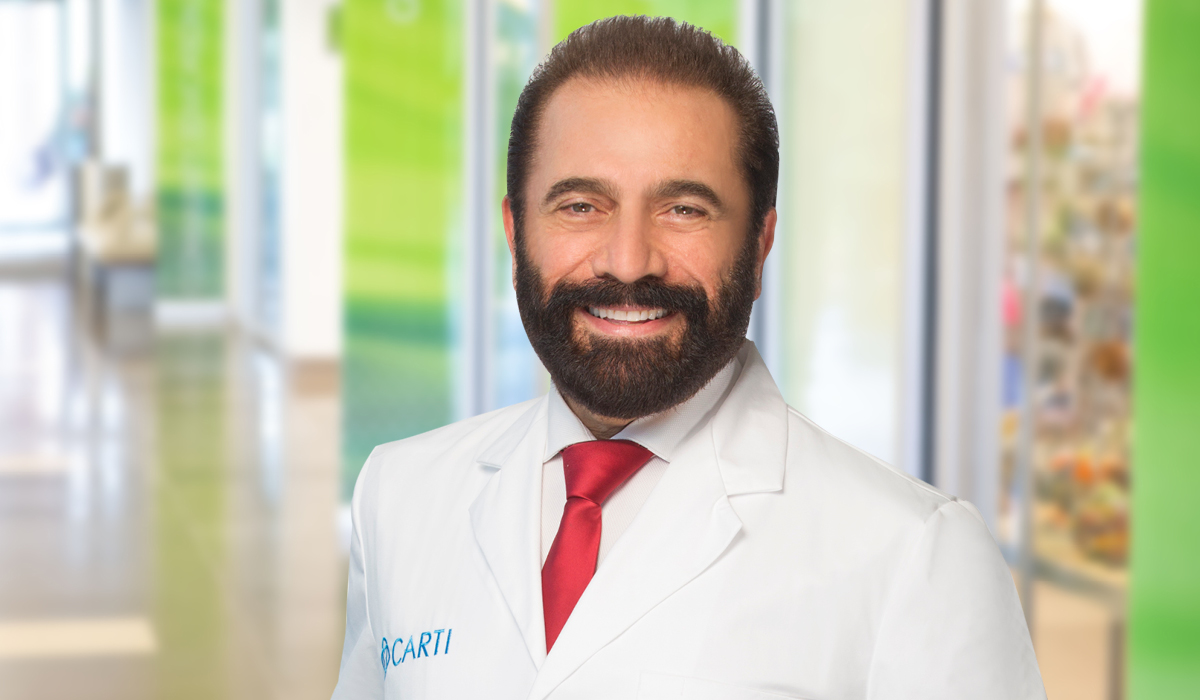Keri Hall’s Story | From Staff to Patient
As printed in the 2019 Cattle Baron’s Ball program, presented by the American Cancer Society
A CARTI staff member faces a fear she had seen thousands of others take on before her.
For 18 years, Keri Hall spent her days at CARTI Cancer Center in Little Rock as a front office representative at various physicians’ clinics. Over the years, she’s greeted thousands of patients with her bubbly personality and sunny disposition, saying “I try to make a difference because our patients come in and they’re sick and scared. If I can provide them with a happy face and someone to talk to, it’ll take their mind off everything, if only for that moment.”
Then one day, while getting a routine mammogram, Keri’s optimism would be tested and her world would be forever changed.
Keri suffered from fibrocystic breast disease, a benign, noncancerous condition which causes the breasts to feel lumpy. It is very important for these patients to undergo regular annual mammograms to confirm that the hardness they’re feeling is just lumps and not disguising cancerous tumors.
Because Keri knew this all too well, she was checking her annual mammogram off her to-do list, at least for another year. Never once did it cross her mind that they might find something because as she says, “we don’t have cancer in my family.”
Keri received a phone call after her mammogram alerting her that they had seen some “spiculated masses” on her scans and wanted her to return for an additional mammogram and ultrasound. The nurse asked her how soon she could return and her response was “right now” because her time working at CARTI made her painfully aware that “you don’t want to wait because anything could be something.”
At her follow-up appointment, the radiologist sat down with Keri and her husband and told them that while he couldn’t confirm a diagnosis without a biopsy, he was almost positive that what they were seeing would in fact turn out to be breast cancer. While most people remember exact wording and phrases a doctor uses when telling them difficult news, for Keri, it was what he didn’t say that said so much more. “Never once did he say, ‘you know it might not be,’ because he already knew. We knew.”
Keri’s worst nightmare had come true, and at that moment she completely tuned everything out and her mind immediately went to “I have two kids I have to live for, and I have a husband that I love.” Keri’s boss, Dr. Scott Stern, ordered a biopsy. Keri remembers laying on the table for her biopsy and thinking, “I knew it was cancer but I didn’t know to what extent. That anticipation is still hard to think about.”
Her results came back the next day, Valentine’s Day of 2019. While that day will forever go down as one of the hardest as its the day she found out she did in fact have breast cancer, Keri still remembers it being filled with so much love and support. From her boss and entire team sitting her down to collectively talk through her diagnosis and course of treatment to sitting down that evening to tell her children, Keri remembers how supportive her colleagues, friends and family were during that incredibly emotional day.
While Keri is the type of person who wouldn’t normally share her personal business with people outside of her inner circle, she knew that the lifesaving treatments she would undergo over the next year would push her to do so purely because of how much they would affect her physical appearance.
Keri said, “Everyone was going to see me with no hair, so that’s when I decided that I would be open. I wanted people to know so I didn’t have to relive all of this every single time because it hurts and it’s emotional. I just wanted to move on; I wanted to move forward.”
Keri and her medical team were quick to take action. She immediately began chemotherapy, undergoing a total of 12 treatments over the course of 12 weeks. By the midway point of her treatments, Keri started to see the physical changes she’d painfully anticipated; her face broke out and her hair began to fall out. She struggled for a couple days about what to do, but ultimately the scalp pain became too much to bear and a patient counseled Keri to go ahead and cut her hair.
More than any decision she’d made to date, Keri said it was whether or not to shave her head that gave her the greatest anxiety. “It was hard to cut my hair because my blonde hair has always been a part of me. That’s how people recognize me – ‘the blonde on the second floor.’ And that’s the way I wanted to look – I didn’t want anything to change.”
Keri chose to walk this road alone, saying “I did it at home when no one was there. I couldn’t do it with my family there, I had to do it myself.” The moment comes back to her vividly, saying “I’m standing in front of the mirror and I had the electric razor just going. I know I was there for 30 minutes just listening to it. I closed my eyes and I just did it really quick. I couldn’t stop, I just had to do it. I was crying through the whole thing.”
After recovering from the initial shock, Keri realized one major problem, she hadn’t yet purchased a head wrap or wig to cover her head. After a couple wig fitting stumbles, including coming home with one wig that her family lovingly told her she could not wear because it resembled a mullet, Keri decided it was time to turn to her friend and colleague, Carolyn Garrett, resource coordinator of CARTI’s Appearance Center.
Thanks to her awkward previous wig experience, Keri knew what she was looking for – something she could style differently day to day, but also something that made her feel like herself, more whole again. Carolyn, a two time breast cancer survivor herself, knew exactly what to recommend, a human hair wig, provided by the American Cancer Society of Arkansas.
After a cut by a local hairdresser who specializes in styling wigs for cancer patients, and some additional styling at home, Keri showed up to work with her new look. She remembers hat moment, saying “Everyone said ‘you look so beautiful’, and I was like ‘I know!’. I was so excited; you can’t even understand.”
Keri said, “It killed my soul to shave my head; my hair was part of my identity. People look at you when you’re sick, but when I had my wig on no one looked at me any differently. It made me feel so much better because no one knew something was different with me. It gave me a sense of relief and normalcy. It gave me a break.”
Today, Keri is awaiting her reconstructive surgery, set to happen at the end of this year. She says “I’ve always said I feel like I know how patients feel, well now I really do. I may not have gone through every single thing they’ve gone through, but I understand because that was me, too.”









